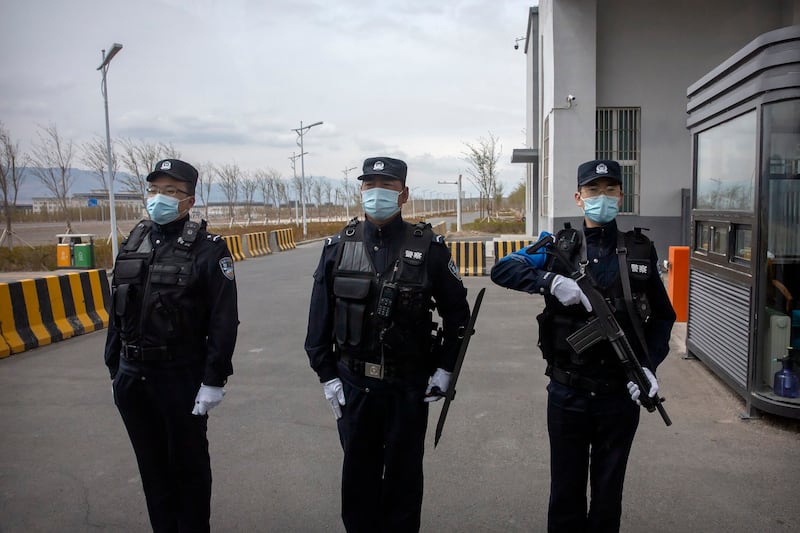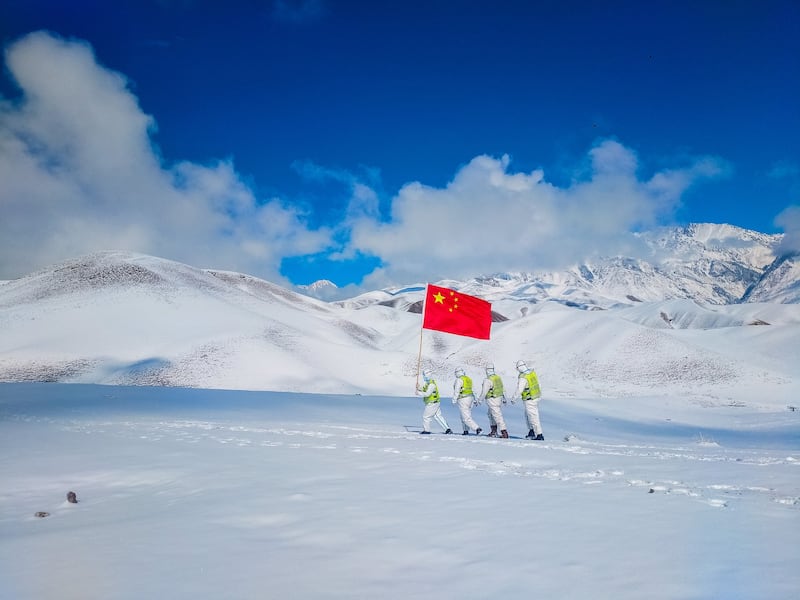Updated Dec. 15 2023, 12:08 p.m. ET
Calling China’s far-western Xinjiang “one of the most heavily policed regions in the world,” the Uyghur Human Rights Project published a report identifying the various police forces used to carry out what it said were “atrocity crimes” against the 11-million strong Muslim ethnic minority.
“This explainer is a critical step in accurately identifying perpetrators,” said UHRP Executive Director Omer Kanat. “By identifying how Uyghurs are policed and controlled, the human rights community is better equipped to seek justice and remediation.”
The report released Wednesday by the Washington-based organization, “Policing East Turkistan: Mapping Police and Security Forces in the Uyghur Region,” uses the geographical term Uyghurs prefer for their homeland.
Since police officers “among the prime actors in carrying out the genocide [of Uyghurs] arising from the Chinese Communist Party’s policies,” the group said it felt it needed to examine exactly how they are structured.

The U.S. government and several Western parliaments have declared the Chinese government’s actions toward the Uyghurs as genocide or crimes against humanity.
The report laid out several different agencies with different duties and command structures, but said they are all under the control of the Chinese Communist Party, or CCP.
One such agency, the People’s Armed Police, or PAP, is under the same CCP arm that controls the military, even though the PAP is not. The PAP has more “mobile detachments,” similar to an army regiment, than any other region in China.
It points out that there are twice as many PAP mobile attachments in Xinjiang than in Beijing, despite having only a fraction of the capital’s population.
Additionally, there are regional police that are able to effectively address perceived threats to the CCP’s authority, but they are not adept in dealing with common crimes, the explainer said.
More police than elsewhere
The report said that there were more police in the Xinjiang Uyghur Autonomous Region, or XUAR, per population than elsewhere in the country.
As of 2017, there were 2.3 times more People’s Armed Police and other “security-related positions” than elsewhere in China: 478 per 100,000 population compared to 212 nationally, it said.
“The purpose of the explainer is to try to make it much more clear in terms of what actually is happening on the ground,” Peter Irwin, the associate director for research and advocacy at UHCP told RFA’s Uyghur Service.
“Who is responsible for these kinds of abuses?” he asked. “Who are the actual people who are on the ground repressing the population and implementing these policies?”
Irwin said it was important to not only condemn the upper leadership in China.
“What's important is that in terms of accountability, in terms of understanding who is responsible for these kinds of abuses, it's critical that we … also focus on the ones who are actually perpetrating the abuses on the ground,” he said.

People often have difficulty understanding the differences between the several types of police in Xinjiang, Ben Carrdus, the researcher who wrote the explainer, told RFA.
"It's very notable when you read reports about what's happening in the Uyghur region that there's a lot of confusion, really … about which kind of police are operating on the ground," he said. "So there was often people confusing the army and the police. And there's so many different police forces at work in the region.
The explainer displays the uniforms of the different types of police in Xinjiang and explains their roles.
“It's very difficult to know who is who. The uniforms can be very similar. They have similar duties, but they have different command structures. It's all very confusing,” he said. “And so the idea of this explainer, … is to just clarify what kind of police do what duties.”
Edited by Malcolm Foster.
Update adds Nuriman Abdurashid to the byline.
